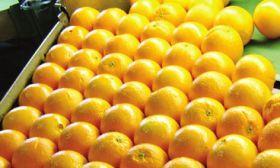
A new report by the United States Department of Agriculture (USDA) has revealed that emerging trade in Australian citrus and mangoes to China is expected to grow after the latter accepted revised quarantine protocols for the fruits.
The move follows last year's visit to China by minister for agriculture, fisheries and forestry Tony Burke, who led discussions on altering regulations alongside Citrus Australia chairman Kevin Cock.
Previous citrus export conditions saw oranges, mandarins, lemons and grapefruit permitted access to northern Chinese ports only, undergoing extensive cold disinfestation treatment which often affected fruit quality.
Improved conditions now mean that citrus including limes, tangelos and sweet grapefruit can access all ports in China, with the cold disinfestation temperature increased (2.1oC for 21 days for fruit fly) – a move that Citrus Australia said will make a huge difference to exports.
According to the Australian Federal Government, the decision to alter quarantine protocols will allow growers more flexibility, will save on shipping costs and will help to protect the quality of fresh produce.
Meanwhile, new mango export conditions will see the elimination of onerous quarantine requirements for proving that orchards were free of mango seed weevil and fruit flies, with growers now afforded more options for monitoring their orchards for signs of the pest, according to the USDA report.
Peter Delis, chairman of the Australian Mango Industry Association, said that the new protocol gives the industry greater scope for assessing high-quality mangoes, without the task of cutting thousands of mangoes to check for pests.
Last year, Australia exported a total of 855 tonnes of citrus to China at a value of approximately A$1.25m.



